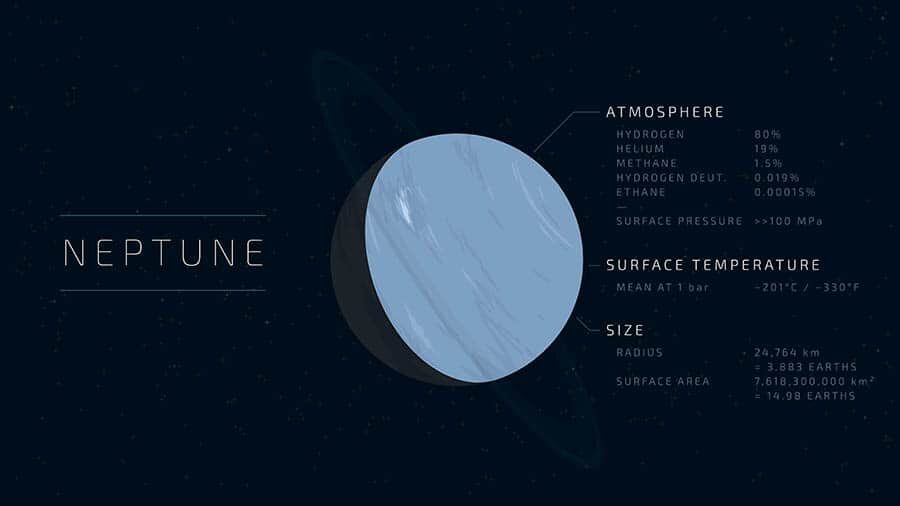Is Neptune a Gas Giant?
When we’re talking about planets, we tend to group them into different categories based on their composition. The four planets closest to the Sun; Mercury, Venus, Earth and Mars, are known as terrestrial planets. This is because they made up primarily of a rocky interior and an iron core in the middle.
However, the planets further out from the Sun aren’t actually called terrestrial planets. Jupiter and Saturn are referred to as the “gas giants” of the solar system, due to their large amount of gas. But what about Uranus and the planet Neptune; are they also “gas giants”, or do we refer to them as something else?
There are a lot of questions as to whether Neptune is a gas giant or not, and is considered to be the same as the other outer planets. After all, it’s made up primarily of gas right? So surely it’s a gas giant? Well, not exactly.
At one point in time, we did refer to Neptune as a gas giant. However, astronomers later created a new definition for Neptune and Uranus as “ice giants”, due to their composition of ice. So whilst we did refer to them as gas giants once upon a time, nowadays Neptune is an ice giant.
So whilst Neptune’s atmosphere is made up of a lot of gas, and it is technically a giant planet, it also has a significant amount of what scientists call “ices” too. So, the redefinition makes sense, as Uranus and Neptune are quite different to Jupiter and Saturn. Though you may still see people refer to Neptune as a gas giant, and they’re not entirely wrong there.
Once you make it into the outer solar system, the four outer planets progressively get colder the further out you make it. Though it does have a small rocky core, it doesn’t have a solid surface like the terrestrial planets.
Neptune’s atmosphere is made up of a lot of gas. This atmosphere is primarily hydrogen and helium, with some methane in there too. The methane is what gives Neptune its blue colored appearance.
 Hydrogen, helium and methane make up most of Neptune’s atmosphere.
Hydrogen, helium and methane make up most of Neptune’s atmosphere.
However, beneath the atmosphere the planet itself is actually made up of different materials. It’s mantle is primarily made of water, ammonia and methane ices – this isn’t a totally liquid state. Astronomers think this is more like ice, which is why Neptune is known as an ice giant, and the planet is surrounded by ammonia clouds.
This differs from the two gas giant planets Jupiter and Saturn, which have a large gaseous atmosphere surrounding the planet. However, these planets also have a mantle made up of gas too, made of molecular and metallic hydrogen.
Beneath the mantle of Neptune is a core of rock and ice, with some metals like iron and nickel in there too. This is the same for both the gas giants and the ice giants, which all have a rocky core in common with one another. But as Neptune is the furthest planet from the Sun, it’s much colder than the gas giants (Jupiter, Saturn).
In astronomy, a lot of what we know about other planets and other galaxies is taken from things we know about an alternative, and applied theoretically. For example, much of what we know about our own Milky Way is taken from what we know looking at our neighbouring galaxy, Andromeda.
We’ve actually only been to the planet Neptune once in history, more than 30 years ago. The spacecraft Voyager 2 flew by the planet Neptune all the way back in 1989. This spacecraft is actually still going, and now it’s all the way out in interstellar space, which is pretty cool.
However, we’ve also studied Neptune a lot via telescope, both using the Hubble Space Telescope but also with the highly magnified telescopes we have here on Earth, too. This has allowed to to get close up views of the planets surface, which in turn has enabled us to learn more about the planet Neptune.
To sum it up, whilst we did used to refer to Neptune as a gas giant, this is no longer the case. Thanks to advancements in our technology, we’ve had the ability to study the planet further, with astronomers now believing that the planet is largely made up of ice instead. So, nowadays we use the term Ice Giant for Neptune instead.